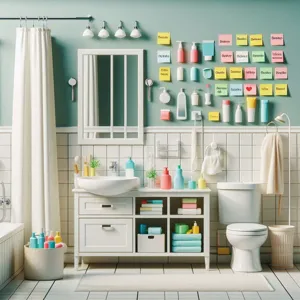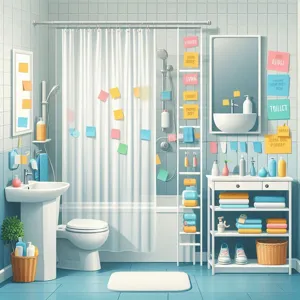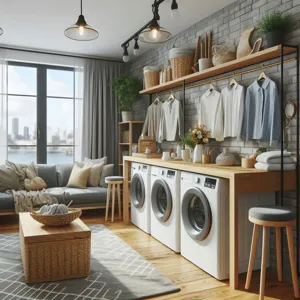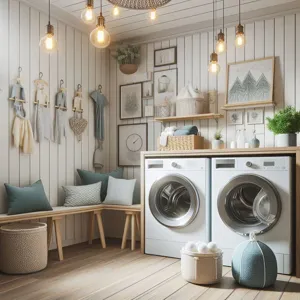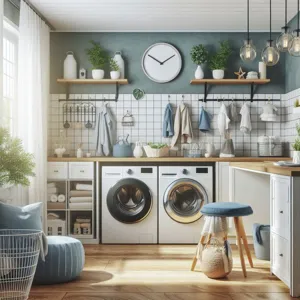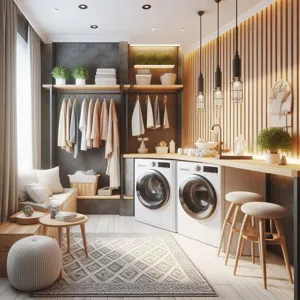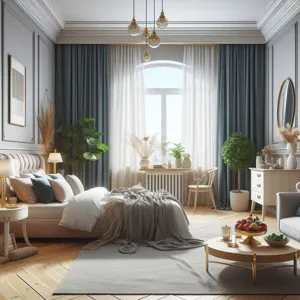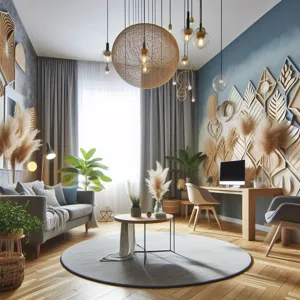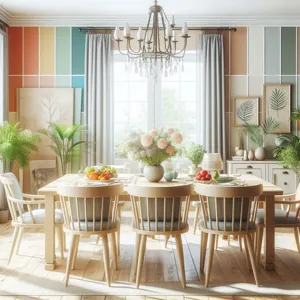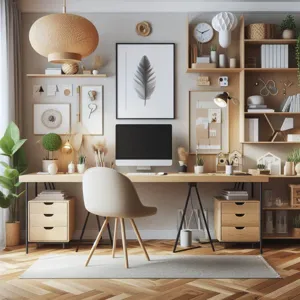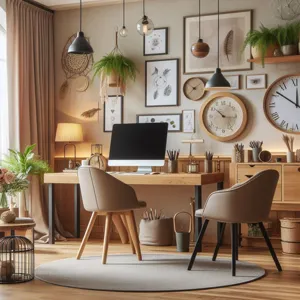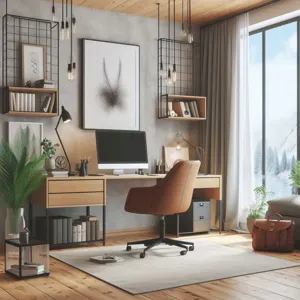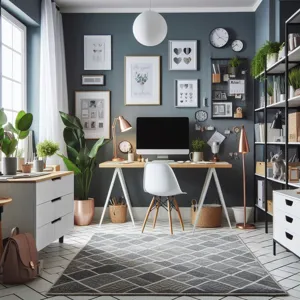Imagine stepping into your backyard and being greeted by the cheerful melodies of songbirds, the fluttering of colorful wings, and the gentle rustle of leaves as nature comes alive around you.
Transforming your outdoor space into a bird paradise is not only a delightful way to connect with wildlife but also a rewarding endeavor that can enhance the beauty of your home. Whether you’re an avid birdwatcher or simply someone looking to add a touch of nature to your surroundings, creating a welcoming habitat for our feathered friends is easier than you might think. In this blog post, we’ll share 10 simple yet effective tips that will help you attract a variety of birds, from vibrant hummingbirds to majestic finches, while also enriching your backyard’s ecosystem. Get ready to roll up your sleeves and turn your outdoor retreat into a vibrant sanctuary where birds can thrive and bring joy to your everyday life!
1. Assessing Your Backyard Space

Before you embark on your journey to create a bird paradise, the first step is to evaluate your backyard space thoroughly. Take a moment to step outside and observe the area with fresh eyes. consider the size of your yard, the existing landscape features, and the surrounding environment. Is it a sun-drenched haven or a shaded retreat? Understanding these elements will guide your decisions on what types of birds you can attract and what features to incorporate.
Look for natural elements that could either aid or hinder your feathered friends. Are there mature trees that offer shelter and nesting opportunities? Do you have open areas that could benefit from the addition of bird feeders or baths? Pay attention to existing plants—native flora can be particularly inviting to birds, providing both food and cover.
Additionally, take note of any nearby structures or fences that could create barriers or disrupt the birds’ flight paths. Consider how the layout of your yard influences visibility and accessibility. For instance, a cozy corner may provide a perfect spot for a birdhouse, while an open area might be ideal for a feeding station.
By assessing your backyard space, you’ll gain valuable insights into how to design a welcoming environment for birds. A thoughtful approach based on your unique landscape will ensure you create a vibrant sanctuary that attracts a variety of species year after year. With a solid plan in place, you can move on to the next steps of transforming your outdoor space into a true bird paradise.
2. Choosing the Right Bird Feeders
Choosing the right bird feeders is crucial for attracting a diverse array of feathered friends to your backyard paradise. With so many styles and types available, selecting feeders that cater to the preferences of different bird species can make all the difference. Start by considering the local birds in your area. For instance, tube feeders are perfect for appealing to smaller birds like finches and chickadees, while platform feeders can accommodate larger species like cardinals and jays.
Opt for feeders made from durable, weather-resistant materials to ensure they withstand the elements and last through multiple seasons. Additionally, think about feeder design: one with drainage holes helps keep seeds dry, while a feeder with a wide perch allows for comfortable feeding.
Placement is equally important; position your feeders in a sheltered spot near trees or shrubs to provide birds with a safe haven from predators. It’s also beneficial to have a variety of feeders—offering different seed types, such as sunflower seeds, safflower seeds, or mixed blends—will attract a broader range of species.
Don’t forget to keep your feeders clean! Regular maintenance not only ensures a healthy feeding environment but also keeps your backyard looking pristine. By thoughtfully selecting and placing the right bird feeders, you’ll create an inviting space that transforms your backyard into a vibrant hub of avian activity, bringing joy and natural beauty to your outdoor oasis.
3. Selecting the Best Bird Seed

Selecting the best bird seed is a vital step in transforming your backyard into a thriving bird paradise. Different birds have varying dietary preferences, so understanding the specific species that frequent your area will help you choose the right blend to attract them.
For instance, if you’re hoping to lure colorful finches, a thistle seed (nyjer) feeder will be your best bet, while chickadees and woodpeckers will eagerly flock to feeders filled with sunflower seeds. A mixed seed blend can also be effective, offering a variety of choices to entice different bird species. Just be mindful that not all blends are created equal; many contain fillers like millet and cracked corn that the birds may ignore.
Consider investing in high-quality seeds that offer a higher nutritional value, ensuring that your feathered visitors receive the best possible food. You might also want to explore the option of purchasing seeds in bulk, which can save you money and keep your feeders stocked longer.
Moreover, remember to regularly clean your feeders and replace old seed to prevent mold and bacteria growth, which can be harmful to birds. By curating a thoughtful selection of bird seed, you’ll not only attract a diverse range of birds but also create a welcoming environment that encourages them to return to your backyard time and again. With the right seed, you’ll be rewarded with colorful visitors and the sweet symphony of chirps and songs that fill the air, truly transforming your outdoor space into a serene bird haven.
4. Planting Native and Bird-Friendly Plants
Creating a bird paradise in your backyard begins with the right selection of plants. Planting native and bird-friendly species is not just beneficial for your avian visitors, it also enhances the overall health and beauty of your garden. Native plants are well-adapted to your local climate and soil conditions, making them easier to maintain while providing essential food and shelter for birds.
Start by researching which plants are indigenous to your area, as these will attract local bird species that have evolved to thrive on them. Think about incorporating a variety of plants, such as shrubs, trees, and flowering perennials, to create layers of habitat. For instance, berry-producing shrubs like elderberry and serviceberry not only provide delicious snacks for birds but also offer shelter from predators.
In addition to native species, consider adding flowering plants that produce seeds, such as sunflowers and coneflowers, which can draw in a multitude of birds during different seasons. Moreover, plants like milkweed can attract pollinators, which in turn supports the entire ecosystem, including the birds that feed on insects.
Don’t forget about providing water sources as well. A simple birdbath or a small pond can be a game-changer, giving birds a place to drink and bathe. Include some rocks or shallow areas to help smaller birds feel safe while they enjoy their refreshing dip.
By thoughtfully selecting and planting native, bird-friendly species, you’ll create not just a sanctuary for your feathered friends but a vibrant, thriving backyard that bursts with color and life. Each season will bring new visitors and sounds, transforming your outdoor space into a lively avian haven.
5. Creating Water Sources for Birds

Creating water sources for birds is one of the most effective and rewarding ways to attract a diverse array of feathered friends to your backyard oasis. Birds, much like humans, require fresh water not only for drinking but also for bathing, which plays a crucial role in maintaining their plumage. By incorporating appealing water features into your outdoor space, you can create a lively hub of activity that brings joy and color to your yard.
Start with a simple birdbath, which can be easily purchased or even DIY-ed using shallow containers. Position it in a visible area, preferably near trees or shrubs that provide natural cover. Birds feel safer when they have nearby escape routes from potential predators, so a strategic placement is essential. Ensure the water is shallow enough for small birds to wade in without risk of drowning, ideally no deeper than two inches.
To keep the water fresh and enticing, change it regularly—ideally every day during the hot summer months. Adding a small fountain or dripper can create movement in the water, which is particularly attractive to birds. The sound of trickling water can also draw them in from afar, making your backyard a go-to destination for thirsty visitors.
Additionally, consider installing a small pond if space allows. A pond not only serves as a water source but also creates an ecosystem that can attract various species of birds and other wildlife. Surround it with native plants that provide shelter and food, turning your water source into a thriving habitat.
Lastly, don’t forget about the importance of cleanliness. Regularly scrub your birdbath or pond to prevent any algae buildup or waterborne diseases. By providing a safe and welcoming water source, you’ll not only witness an increase in bird activity but also contribute to their well-being, making your backyard a true paradise for avian life.
6. Providing Shelter with Birdhouses and Nesting Boxes
Creating a welcoming environment for birds in your backyard goes beyond just providing food and water; it also involves offering safe and cozy shelter. Birdhouses and nesting boxes serve as essential havens for our feathered friends, giving them a secure space to rest, raise their young, and take refuge from predators and harsh weather conditions.
When selecting or building birdhouses, consider the specific needs of the bird species in your area. Different birds have different preferences for nesting sites, so it’s important to choose or construct houses that cater to these preferences. For example, bluebirds prefer open, spacious houses with a circular entrance, while wrens thrive in smaller, more enclosed spaces. Additionally, ensure that the dimensions and materials used are appropriate; untreated wood is often the best choice, as it allows for ventilation and insulation while providing a natural feel.
Placement is also key to attracting birds to your backyard sanctuary. Position your birdhouses at varying heights and distances from trees or shrubs, as many birds appreciate having nearby perches to survey their surroundings. It’s advisable to avoid direct sunlight or overly windy spots, as these can deter nesting. Instead, find a balance that offers both sunny spots and shaded areas, creating a cozy retreat for your avian visitors.
Don’t forget to keep an eye on maintenance! Cleaning out old nesting materials after the breeding season can prevent the spread of disease and encourage birds to return year after year. By providing well-placed and well-maintained birdhouses and nesting boxes, you’ll not only give birds a safe space to thrive but also create a vibrant and lively atmosphere in your backyard, filled with the charming sights and sounds of nature.
7. Incorporating Birdbaths for Bathing and Drinking

Incorporating birdbaths into your backyard is one of the most delightful ways to attract a diverse array of feathered friends while adding a serene focal point to your outdoor space. Birds, much like humans, appreciate a refreshing bath, and a birdbath serves as a perfect oasis for them to cleanse their feathers and hydrate.
When selecting a birdbath, consider the size and style that will complement your garden. A shallow basin—ideally no deeper than two inches—will cater to smaller birds, while a slightly deeper option can attract larger species. Materials such as ceramic, stone, or concrete not only provide durability but also blend beautifully with natural surroundings.
Position your birdbath in a quiet, sheltered area, preferably near trees or shrubs that offer cover. This allows birds to feel safe as they approach for a drink or a dip. Adding a gentle water feature, like a small fountain or dripper, can create soothing sounds and rippling water that will entice birds even more.
To maximize usage, keep the birdbath clean and filled with fresh water. Regular maintenance is key; change the water every few days, especially in hot weather, to prevent algae buildup and keep it inviting for your avian visitors.
You might also consider adding decorative stones or pebbles in the birdbath to provide birds with safe perches while they sip or splash. With the right setup, your backyard birdbath can become a bustling hub of activity, bringing nature closer to home and allowing you to observe the enchanting behaviors of your local birds. Whether it’s the quick flutters of a sparrow or the elegant dips of a blue jay, a well-placed birdbath will transform your outdoor space into a bird paradise that you—and your feathered friends—will cherish.
8. Designing a Bird-Friendly Garden Layout
Creating a bird-friendly garden layout is both an art and a science, one that harmonizes the needs of our feathered friends with the natural beauty of your outdoor space. To begin, consider incorporating a diverse range of plants that provide food, shelter, and nesting opportunities for various bird species. Native plants are particularly beneficial, as they offer the seeds, fruits, and insects that local birds rely on for sustenance.
Aim for a layered garden design, combining trees, shrubs, and flowers to create a multi-dimensional space. Tall trees can serve as lookout perches, while dense shrubs provide hiding spots from predators and cozy nesting sites. Consider planting flowers that bloom at different times throughout the seasons to ensure a steady supply of nectar and seeds. Wildflowers and native grasses can also attract insects, which are vital for feeding hungry chicks during breeding season.
In addition to plant selection, think about the layout of your garden. Create a welcoming environment by incorporating bird baths, feeders, and nesting boxes placed at varying heights. A bird bath not only quenches their thirst but also offers a place for bathing, which is essential for their plumage maintenance. Ensure it is shallow and has a gentle slope for easy access.
Strategically position your feeders near natural cover, such as trees or bushes, so that birds feel safe while dining. Use a mix of feeder types to attract different species; tube feeders for finches, platform feeders for larger birds, and suet feeders for woodpeckers, for example. Avoid placing feeders too close to windows to reduce the risk of collisions.
Finally, make your garden a sanctuary by minimizing pesticide use and providing a safe haven for all creatures. By thoughtfully designing your bird-friendly garden layout, you’ll not only create an inviting habitat for birds but also enjoy the soothing presence of nature right in your backyard, transforming it into a vibrant bird paradise.
9. Minimizing Pesticide Use for a Safe Habitat
Creating a bird paradise in your backyard goes hand in hand with ensuring a safe and welcoming environment for your feathered friends. One of the most significant steps you can take is to minimize pesticide use. While these chemicals might seem like a quick solution to pesky insects or unwanted weeds, they can have devastating effects on local bird populations and the overall health of your ecosystem.
Birds are incredibly sensitive to toxins, and pesticide residues can disrupt their reproductive systems, diminish their food sources, and even lead to fatal consequences. By reducing or eliminating pesticides, you not only protect the birds but also foster a healthier environment for beneficial insects, like ladybugs and bees, which play crucial roles in pollination and pest control.
Instead of reaching for chemical solutions, consider organic alternatives. Natural pest repellents made from ingredients like neem oil or diatomaceous earth can help manage pests without harming your avian visitors. Additionally, implementing integrated pest management (IPM) techniques—such as encouraging natural predators, planting pest-resistant plants, and promoting biodiversity—can effectively keep your garden thriving.
Creating a safe habitat also means providing clean water sources and native plants that offer shelter and food. By cultivating an organic garden, rich in native flora, you can create a lush environment that attracts a variety of birds, all while maintaining ecological balance.
In short, minimizing pesticide use is a small yet impactful step toward transforming your backyard into a sanctuary for birds. By prioritizing their safety and well-being, you contribute to a sustainable ecosystem that your avian companions will thrive in, ensuring they return to your yard time and time again.
10. Attracting Specific Bird Species with Targeted Features
To truly transform your backyard into a bird paradise, consider tailoring your space to attract specific bird species that you admire. Different birds have varying preferences for food, shelter, and nesting sites, so understanding the habits and needs of your desired feathered friends is crucial.
For instance, if you want to invite vibrant hummingbirds into your garden, installing nectar feeders filled with a sugar-water solution is essential. Choose bright, tubular feeders that mimic the flowers they love, and position them in a sunny area away from predators. Additionally, planting native flowering plants will not only provide natural food sources but also create a beautiful landscape that complements your feeders.
If songbirds like finches or chickadees are your target, consider incorporating specific features such as platform feeders filled with sunflower seeds or nyjer thistle. These birds appreciate open feeding spaces where they can easily spot potential threats. Furthermore, adding birdbaths with shallow, gently sloping edges can entice a variety of birds to visit, offering them a refreshing place to drink and bathe.
For those interested in attracting owls or woodpeckers, install nesting boxes designed specifically for these species. Make sure to place them in quiet, undisturbed areas of your yard, providing the shelter and safety these birds crave. Remember, the right combination of food, water, and shelter can create an irresistible oasis for your desired bird species.
By thoughtfully curating your backyard with targeted features, you can create a vibrant ecosystem that supports specific birds, enriching both their lives and yours. Enjoy the process of observing and learning, and soon you’ll find your garden alive with the songs, colors, and antics of your favorite avian visitors.
11. Creating a Birdwatching Area
Creating a dedicated birdwatching area in your backyard can transform your outdoor space into a serene sanctuary, inviting both feathered friends and nature enthusiasts alike. Start by selecting a quiet corner of your yard where you can observe the birds without startling them. This space should be away from heavy foot traffic and noise, allowing for a peaceful environment that encourages birds to visit.
Next, consider investing in a comfortable chair or a cozy bench. This will be your vantage point for observing the various species that come to your backyard. Enhance the space with a small table to hold your birdwatching gear—binoculars, a field guide, or even a notebook for jotting down your observations.
To attract a diverse array of birds, make sure your birdwatching area is thoughtfully designed. Install bird feeders filled with a variety of seeds, suet, and nectar to cater to different bird species. Position these feeders within clear sightlines from your seating area, ensuring they are easily visible but not too close, as this may deter shy birds.
Incorporate native plants, shrubs, and trees that provide natural shelter and nesting sites. Not only do these plants offer food sources such as berries and seeds, but they also create a beautiful, lush backdrop for your birdwatching experience. Adding a small water feature, like a birdbath or pond, can further entice birds to your yard, allowing them to drink and bathe while you watch in delight.
Finally, consider adding birdhouses and nesting boxes to encourage more permanent residents in your backyard paradise. Choose designs suitable for the bird species you wish to attract, and place them in sheltered, quiet spots away from predators.
With these thoughtful touches, your birdwatching area will not only enhance your backyard’s aesthetic but also create a haven for birds, making your space a vibrant hub of activity and a delightful retreat for you to enjoy the wonders of nature.
12. Using Bird-Friendly Decorations and Accessories
When it comes to creating a bird paradise in your backyard, the aesthetics matter just as much as the essentials. Using bird-friendly decorations and accessories not only enhances the beauty of your outdoor space but also makes it more inviting for our feathered friends. Imagine vibrant, eye-catching ornaments that blend harmoniously with nature, creating an environment where birds feel safe and welcomed.
Start with birdhouses that are both functional and decorative. Choose designs that mimic the natural habitats of local birds, incorporating materials like untreated wood, which is not only safer for birds but also adds a rustic charm to your backyard. You can paint these houses in soft, nature-inspired colors to draw attention without overwhelming the landscape. Ensure they are placed in sheltered areas, away from predators, to encourage nesting.
Wind chimes and vibrant garden stakes can add a touch of whimsy while also drawing birds in. Opt for chimes made from natural materials that produce gentle sounds, as harsh noises can startle birds away. Similarly, colorful garden stakes can serve as landmarks in your yard, helping birds navigate their new paradise while adding splashes of color.
Additionally, consider using decorative feeders that match your garden’s theme. Not only should they be functional, providing easy access to seeds or nectar, but they can also be works of art. Look for feeders shaped like flowers, fruits, or even abstract designs that can become focal points in your garden while catering to specific bird species.
Don’t forget to incorporate a water feature, such as a birdbath or a small pond. Opt for shallow designs with textured surfaces that provide birds with a safe spot to drink and bathe. Decorate your birdbath with stones, pebbles, or even floating flowers to create a serene oasis that attracts birds while enhancing the overall aesthetics of your yard.
Incorporating these bird-friendly decorations and accessories not only beautifies your outdoor space but also contributes to a more welcoming atmosphere for birds. With thoughtful design and consideration, your backyard can transform into a stunning sanctuary where both humans and birds can enjoy the beauty of nature together.
13. Educating Yourself on Local Bird Species
Educating yourself on local bird species is one of the most rewarding steps you can take in your journey to create a bird paradise right in your backyard. Not only does this knowledge enhance your appreciation for the avian visitors, but it also allows you to tailor your environment to meet their specific needs. Start by researching the types of birds that are naturally found in your area; this could include common species such as cardinals, blue jays, and sparrows, or perhaps more exotic ones like orioles or hummingbirds, depending on your location.
Consider investing in a good field guide or downloading a bird identification app to help you recognize different species by their colors, shapes, and calls. Being able to identify the birds that frequent your backyard will enhance your birdwatching experience and enable you to provide the right food, nesting materials, and habitats for them. For instance, if you discover that your area is home to warblers, you might choose to plant native shrubs that provide the insects they need for nourishment.
Additionally, joining local birdwatching groups or online communities can be invaluable. These platforms offer a wealth of knowledge, from understanding seasonal migrations to learning about nesting habits and behaviors. Engaging with fellow bird enthusiasts can provide tips on attracting specific species and fostering a thriving ecosystem in your backyard.
Ultimately, becoming familiar with your local birds not only enriches your gardening efforts but also connects you more deeply with nature. As you watch these beautiful creatures flit from feeder to tree branch, you’ll find a sense of joy and fulfillment in knowing that your backyard has become a safe haven for them. Embrace the journey of learning, and you’ll be rewarded with countless moments of wonder right outside your window.
14. Keeping a Birdwatching Journal
Keeping a birdwatching journal is not just a delightful way to document your feathered visitors; it’s also an enriching practice that deepens your connection with nature. As you sit quietly in your backyard, the vibrant colors and unique behaviors of birds can inspire you to grab a notebook and pen. This journal becomes a personal record of your observations—detailing the species that visit, their feeding habits, and the times of day they are most active.
Imagine flipping through the pages and reminiscing about the bright flash of a ruby-throated hummingbird darting to your feeder or the majestic flight of a hawk soaring overhead. You can note the weather conditions, the plants in bloom, and even the sounds that accompany your sightings. Over time, you’ll start to recognize patterns, such as seasonal migrations or the arrival of specific birds at certain times of the year.
In addition to being a reflective practice, a birdwatching journal serves as an educational tool. You can include sketches or photographs of the birds you encounter, research interesting facts about them, and jot down notes on their behaviors. This not only enhances your knowledge but also enriches your experience as you become more attuned to the intricate lives of these creatures.
Furthermore, sharing your journal with family and friends can inspire others to take an interest in birdwatching and conservation. Consider inviting them to join you in this rewarding endeavor; together, you can create a community of bird enthusiasts, exchanging tips and stories over a cup of coffee in your backyard sanctuary. By keeping a birdwatching journal, you cultivate not just a record of your observations but a deeper appreciation for the lively ecosystem that thrives right outside your door.
15. Engaging with the Birdwatching Community
Engaging with the birdwatching community can elevate your backyard bird paradise from a simple hobby to a rich, shared experience. Connecting with fellow bird enthusiasts not only enhances your understanding of avian behavior but also opens the door to a wealth of knowledge, resources, and inspiration.
Start by joining local birdwatching clubs or online forums where you can share your experiences, exchange tips, and discuss the different species that visit your area. These communities are often full of seasoned birdwatchers who can provide valuable insights on attracting specific species or creating a more inviting habitat. For example, they might suggest the best types of feeders for attracting finches or the ideal water features for drawing in more songbirds.
Participating in organized birdwatching events, such as group outings or educational workshops, can also deepen your appreciation for these feathered visitors. Such gatherings are a fantastic opportunity to observe birds in the wild, learn from experienced birders, and even take part in citizen science initiatives, like bird counts or habitat restoration projects.
Sharing your backyard birdwatching journey on social media can further connect you with this vibrant community. Posting photos of your visits, sharing tips on your setup, or even live-streaming your backyard activity can inspire others while also inviting them to share their own experiences.
Ultimately, engaging with the birdwatching community enriches your backyard experience and fosters a collective passion for nature that can lead to lifelong friendships and shared adventures. So, get involved, share your story, and watch as your bird paradise flourishes, both in your backyard and within the community around you.
As we wrap up our exploration of transforming your backyard into a bird paradise, we hope you feel inspired to take action and create a vibrant sanctuary for our feathered friends. By implementing these 10 simple tips, you can cultivate an inviting environment that not only attracts a diverse array of birds but also enhances your outdoor space with the beauty and joy of nature. From selecting the right plants to providing ample food and water sources, each step contributes to a thriving ecosystem right in your own backyard. So grab your gardening gloves, hang those feeders, and get ready to enjoy the delightful sights and sounds of birds flocking to your transformed haven. Happy birdwatching!





